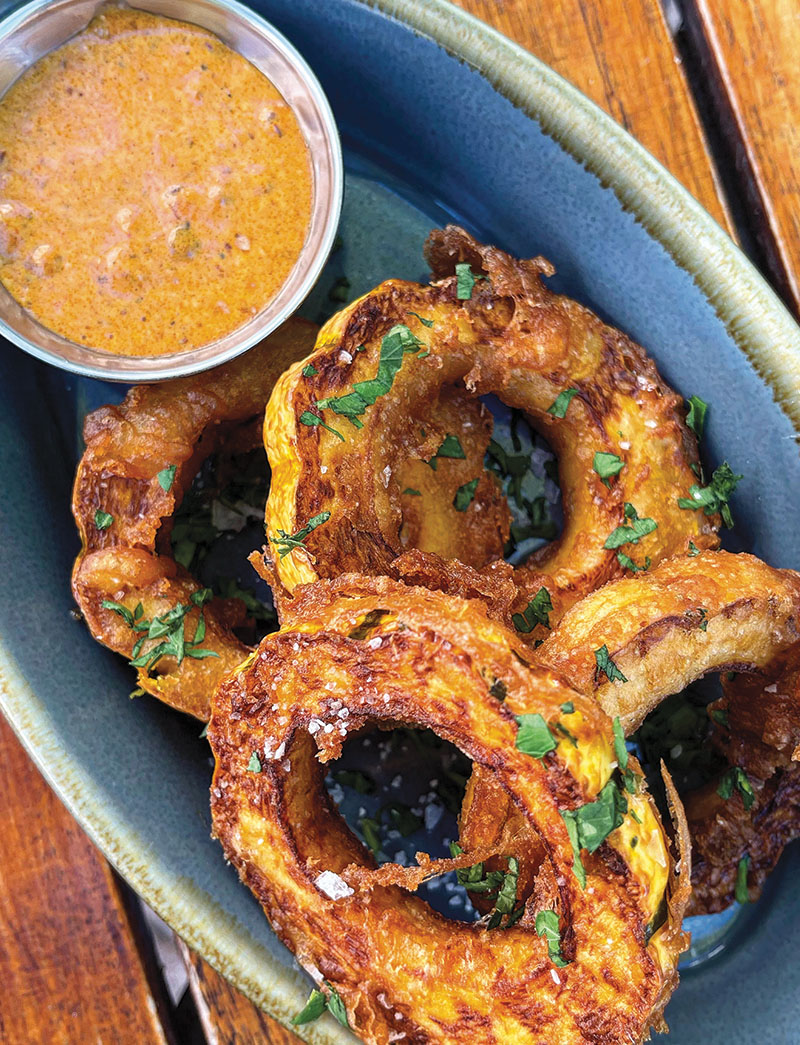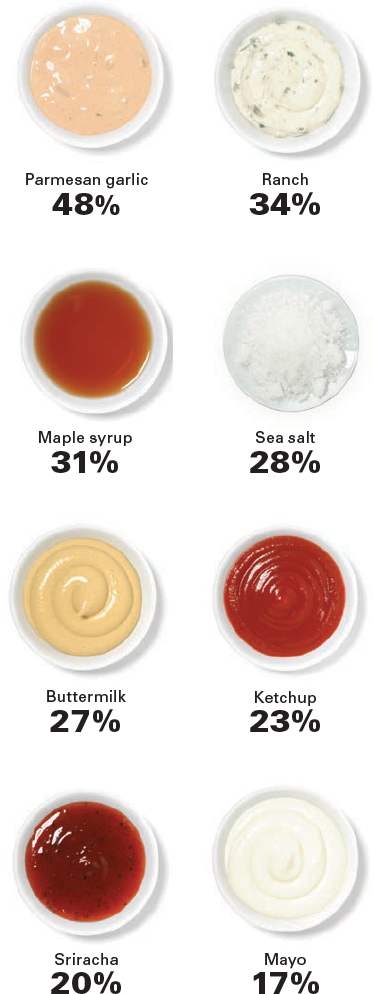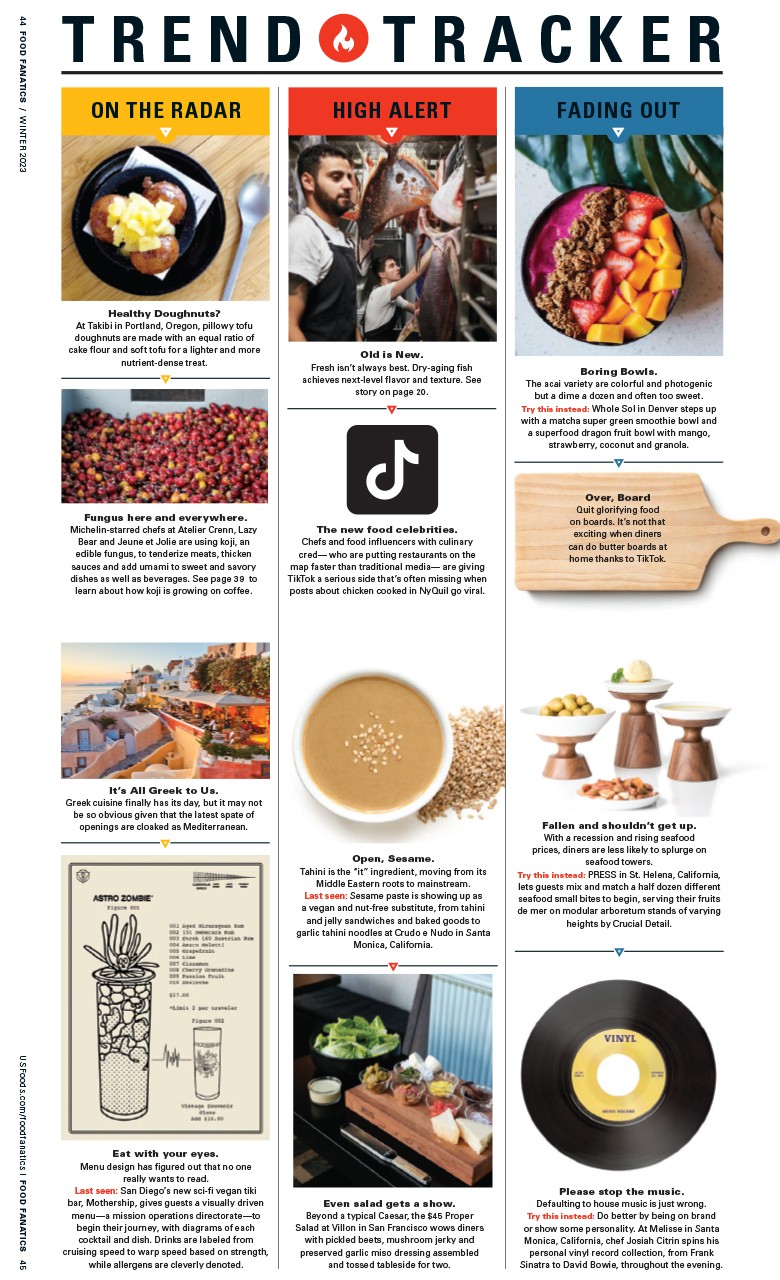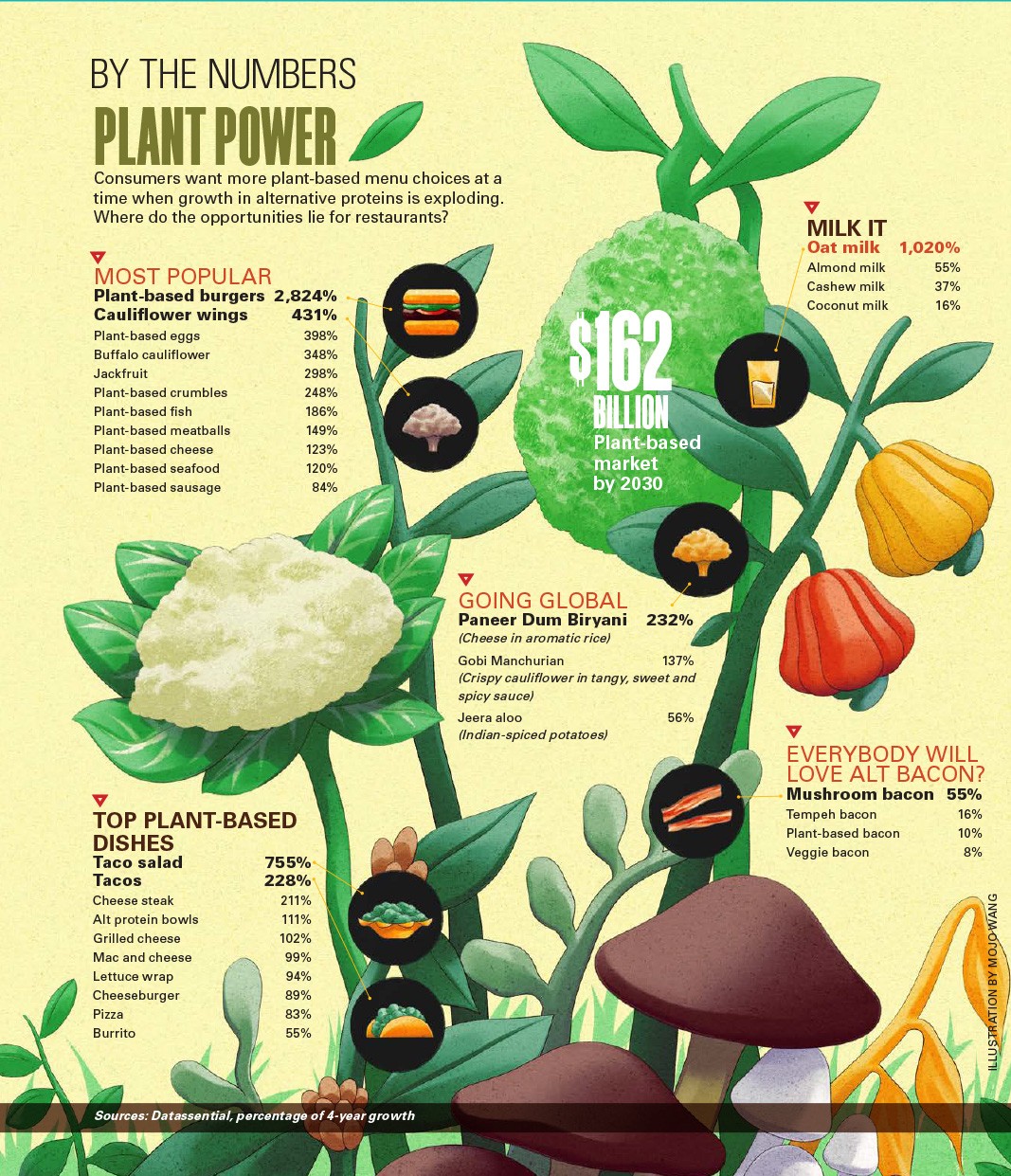SECRET’S IN THE SAUCE
The wizardry of everyday ingredients
► Viewing ketchup just for french fries and mayonnaise mostly for sandwiches is understandable – even expected – considering that they’re standard condiments. Same goes for barbecue sauce that’s used primarily for ribs and ranch dressing merely for salads.

But they can be so much more. Beneath their pigeon-holed persona lies innumerable ways to advance their use. They easily can become instruments for building complex sauces, the wand that raises the flavor quotient.
Consider mustard, for example. “Growing up, we only ate Grey Poupon on sandwiches,” says Laura Vaughn, head of culinary for Kraft Heinz, whose background includes stints at fine dining restaurants. “It wasn’t until I became a chef that I learned how much mustard can do.”
In Chicago, Honey Butter Fried Chicken reaches for barbecue sauce and a drizzle of ranch dressing to distinguish its pimento mac and cheese from others, while mustard comes together with honey on salmon at Erick Williams’ casual Mustard Seed Kitchen. In Denver, mayonnaise is paired with ‘nduja and served with thrice-cooked potatoes at The Greenwich. At Sassafras, in the same city, roast beef breakfast featuring the meat, collard greens, cheesy potato casserole and a poached egg is finished with barbecue sauce and gravy.

“Any time you’re stirring something into a sauce, it’s not just one plus one equals two, but it’s a dozen different flavors of deliciousness,” Vaughn says.
Consider these ways condiments and sauces can amp up flavor on their own or paired with others:

MUSTARD: Offers many characteristics that will unify a dish.
❱ Adds sharpness and helps emulsify dressings
❱ Serves as the glue for dredging in breadcrumbs and other coatings, while adding a layer of flavor
❱ Flavor mellows when it’s heated
Torching tips:
TRY THIS: After pan-searing a steak or piece of fish, swirl a little butter and grainy mustard in the pan for an elevated and elegant sauce.
MAYONNAISE: It’s basically eggs and oil, so take advantage of the fat.
❱ Ideal base to deliver customizable flavors, from richness (aioli) to heat (chilies) and acid (citrus and vinegars)
❱ Serves as the glue for dredging, which is customizable for a range of spices and dry seasonings such as ranch powder or togarashi
❱ Can take on a seemingly endless range of global flavors as a spread or dipping sauce. Think roasted garlic, chilies, harissa, miso and chili crunch
TRY THIS: Sebastien Rouxel, Thomas Keller’s pastry chef at Bouchon Bakery and coauthor of the eponymous cookbook, swears by it for moist and complex chocolate genoise.
KETCHUP: Heat up this condiment for the maillard reaction or use its sweet and acidic notes for other sauces.
❱ Enhance classics, from meatloaf and burgers to grilled chicken and pork
❱ Think of ketchup as an ingredient that can be used to add notes of tomato to achieve a sweet and sour profile
TRY THIS: Spread atop meatloaf and “run it under the broiler until it’s caramelized, which brings out the roasty caramelized sugar and tomato notes,” says Vaughn.
WORCESTERSHIRE: Treat this tangy, briny condiment like soy sauce to up the umami factor.
❱ Stir into sauces for a more savory flavor or to finish a sauce
❱ Add a few dashes to any sauce, dressing or dipping sauce to add complexity
❱ Include in the egg wash for coating vegetables or in proteins before dredging
TRY THIS: Combine with ketchup, and brush onto burgers.



